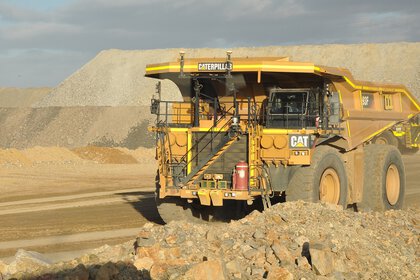Will electric and driverless versions of construction machines soon be available?
Currently, electric and driverless construction machines are still niche products or only at the prototype stage. However, market requirements and manufacturers’ commitment are driving development.
The international construction machinery industry is under increasing pressure to prevent both exhaust emissions and noise emissions. The Mayor of London, for example, has set a goal aiming to ensure that the center of the British capital is an “ultra-low emission zone” by 2020. This also means that construction machines will have to be either zero-emission vehicles or ultra-low emission vehicles. Construction work elsewhere, for example in our inner cities, in hospital areas and in enclosed spaces, will also have to be as quiet and involve as few air pollutants as possible. The increased use of electric drives could be one way of achieving this.
Electric versions of smaller construction machines in particular already exist
“Mechanical engineering companies have already launched e-solutions for smaller machines, such as vibratory plate compactors, small rollers and compact wheel loaders”, says Dr. Darius Soßdorf, Technical Regulations and Standardisation Consultant at the Construction - Equipment and Plant Engineering trade association of the German Mechanical Engineering Industry Association (VDMA e.V.). Wacker Neuson SE, for example, has been very active on the electrification scene for a few years now. According to the Munich-based company, its goal is to build up a full electric product portfolio, which already includes all essential e-devices and e-machines for developing inner-city construction sites, from battery-powered rammers through to wheel loaders.
Hybrid solutions for higher power ranges?
In contrast, manufacturers are currently still struggling with electric solutions for high-power-range machinery as the power required for the type of work in question is too high. “In order to supply a ‘normal excavator’ weighing approx. 15 tons with sufficient energy for a day shift, using current technology the necessary battery pack would weigh around eight tons,” calculates Wolfgang Lübberding. In light of this, the Business Unit Manager of the Association of the Construction Industry, Environmental Technology and Mechanical Engineering (VDBUM e.V.) sees hybrid vehicles as another future area for development. “The device would be electrically powered for light work, for example driving, and then a combustion engine would be engaged where maximum power is required” says Lübberding.
An opportunity for recuperation and storage systems
It is clear that when electric drive units are used, the machine’s available energy must be used extremely carefully. “As such, solutions focusing on energy recovery and storage will be increasingly in demand for electric and hybrid machines in particular,” says Prof. Dr. Eng. Frank Will with certainty. The current Endowed Chair of Construction Machines at the Technical University of Dresden continues: “Whenever a machine works largely intermittently, these systems can offer considerable potential to make savings.”

Driverless construction machines are already in use in the mining sector
Like electrification, driverless vehicles are also one of the hot topics for future mobility. In relation to the rest of the construction industry, a lot of headway has been made in the mining sector. For example, the US manufacturer Caterpillar already sells commercially autonomous and semi-autonomous operating systems for dump trucks, bucket-wheel excavators, bulldozers and low loaders in the mining sector. Upgrading the hardware and software of other manufacturers’ trucks has also been part of this line of business since last year.

Elsewhere, developments have only reached the prototype stage
Apart from the somewhat unique world of quarries and mines where routes stay the same for long periods of time, driverless machines are not yet something which can be fully accomplished or implemented due to the safety aspects involved at complex construction sites. “Finding solutions here will be something for the construction and construction machinery industry to work on in the near future,” comments Dr. Soßdorf of the VDMA. Many manufacturers have already developed prototypes, for example MAN Truck & Bus, which this year unveiled its driverless safety vehicle. The MAN aFAS fully automatically ensures that mobile roadworks on freeways are kept safe. Using “car-to-car communication” it follows the truck up ahead, which is deployed as a working vehicle on the hard shoulder of freeways. This solution, which won the Truck Innovation Award at the IAA Commercial Vehicles in September of this year, prevents people being injured as these vehicles are still involved in what are sometimes serious rear-end collisions caused by traffic approaching from behind.
Photo material: © Wacker Neuson | © Caterpillar | © MAN Truck & Bus AG

